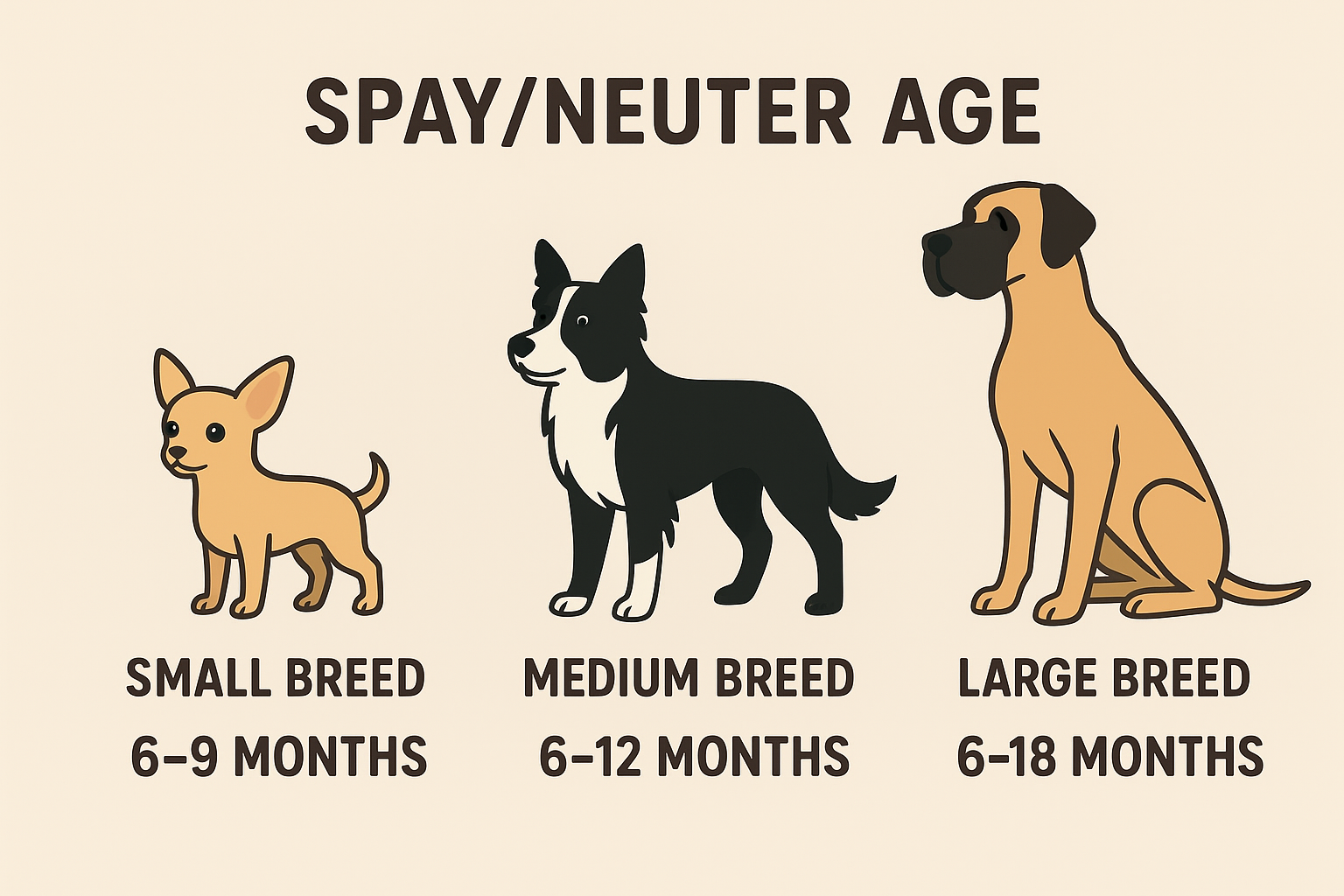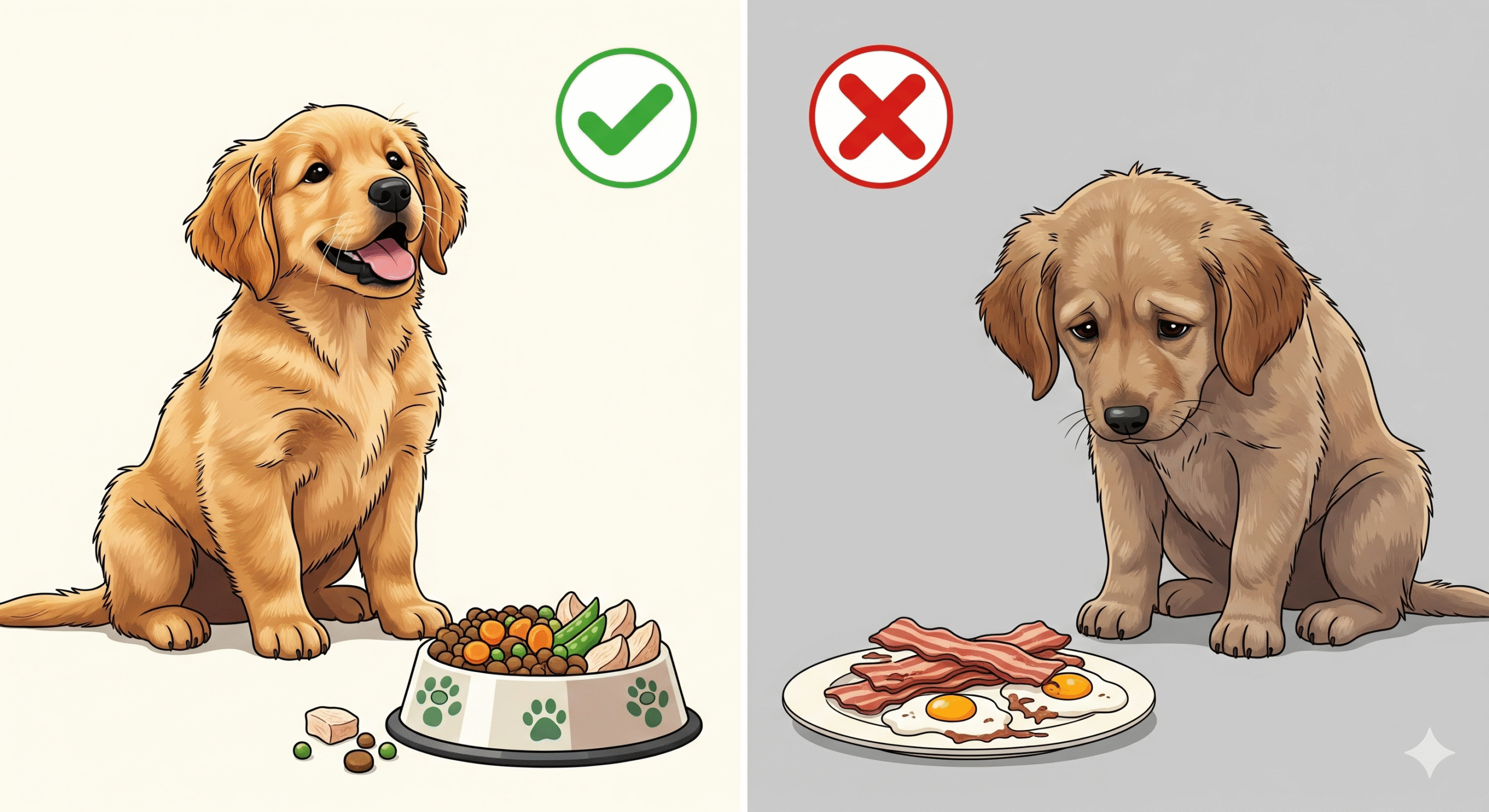The decision of when to spay a puppy is one of the most important choices you’ll make for your new furry family member. For decades, the standard advice was simple: sterilize your pet at six months of age. However, groundbreaking research has revealed that this one-size-fits-all approach may not be best for every dog. The ideal timing is now understood to be heavily influenced by your puppy’s breed, expected adult size, and even sex.
This comprehensive guide will cut through the confusion. We’ll explore the science behind the new recommendations, provide clear breed-specific guidelines, and empower you to have an informed conversation with your veterinarian. Making the right choice can significantly impact your dog’s long-term risk for orthopedic diseases and certain cancers. Let’s navigate this complex decision together. 📊
Why Timing Matters: Understanding the Hormone Health Debate ⚖️
Spaying (ovariohysterectomy for females) and neutering (orchiectomy for males) involve the removal of reproductive organs. This eliminates the ability to reproduce and also stops the production of key sex hormones: primarily estrogen and progesterone in females, and testosterone in males.
These hormones do more than just drive reproductive behavior. They also play a crucial role in your puppy’s physical development, particularly in closing the growth plates at the ends of long bones.
- Early Spay/Neuter (Traditional 6-Month Timing):
- Pros: Virtually eliminates risk of mammary cancer if done before the first heat, prevents pyometra (a life-threatening uterine infection), prevents testicular cancer, and eliminates unwanted pregnancies and behaviors like roaming or marking.
- Cons: Removal of sex hormones before growth plates close can cause bones to grow longer than intended, altering a dog’s natural proportions. This mismatch is linked to a significantly higher risk of cruciate ligament tears (CCL) and hip dysplasia, especially in large breeds.
- Later Spay/Neuter (After Growth Plate Closure):
- Pros: Allows hormones to guide proper skeletal development, leading to better joint conformity and a dramatically reduced risk of orthopedic disorders.
- Cons: Allows for a heat cycle in females (which comes with its own management), a slightly increased risk of mammary cancer compared to spaying before the first heat, and the risk of unintended pregnancy if not carefully managed.
Expert Insight: “The conversation has shifted from ‘when should we do this?’ to ‘what is best for this specific dog?’ We now weigh the proven benefits of sterilization against the potential orthopedic risks, and that calculation changes based on whether you have a 5-pound Yorkie or a 120-pound Great Dane.” – Dr. Emily Sanders, DVM.
General Guidelines by Breed Size Category 📏
While your veterinarian’s advice is paramount, the following guidelines, synthesized from major studies (like the UC Davis research), provide a strong foundation for discussion.
Small Breed Dogs (Under 25 lbs adult weight) 🐩
- Examples: Chihuahua, Yorkshire Terrier, Pomeranian, Maltese, Toy Poodle, Shih Tzu.
- Recommended Age: 6-12 months.
- Reasoning: Small breed dogs reach skeletal maturity much earlier than large breeds, often by 6-8 months. Their risk for orthopedic diseases like hip dysplasia is genetically much lower. Therefore, the traditional timing of spaying before the first heat (which usually occurs around 6 months) still provides the maximum benefit for cancer prevention without significantly increasing orthopedic risks.
Medium Breed Dogs (25 – 45 lbs adult weight) 🐕
- Examples: Cocker Spaniel, Border Collie, Australian Shepherd, Bulldog, Standard Schnauzer.
- Recommended Age: 12-18 months.
- Reasoning: This group falls into a middle ground. Waiting until after the first heat (typically after 12 months) allows for more balanced hormonal development and growth plate closure. This is often a good compromise, minimizing cancer risks while promoting better joint health. Discuss your individual dog’s activity level and family history with your vet.
Large & Giant Breed Dogs (45+ lbs adult weight) 🦮
- Examples: Labrador Retriever, Golden Retriever, German Shepherd, Standard Poodle, Boxer, Rottweiler, Great Dane, Mastiff, Saint Bernard.
- Recommended Age: 18-24 months.
- Reasoning: For these dogs, patience is critical. Large and giant breeds can take up to 18-24 months to reach full skeletal maturity. Waiting to spay or neuter until after this point is strongly recommended to ensure proper growth plate closure and drastically reduce the lifetime risk of devastating CCL tears and hip dysplasia. The benefits for joint health in this group often outweigh the slightly increased cancer risk.
Special Considerations: Sex, Breed, and Health
The decision isn’t based on size alone. Other factors come into play.
Sex-Based Differences
- Females: The primary benefit of early spaying is the near-elimination of mammary cancer risk if done before the first heat. However, allowing one heat cycle is often recommended for large breeds to aid development, as the cancer risk jump is less dramatic after just one cycle.
- Males: For large-breed males, waiting until full maturity is especially crucial for orthopedic health. Neutering too early can also sometimes contribute to anxiety and fear-based behaviors in some dogs, as testosterone aids in confidence.
Breed-Specific Health Concerns
Certain breeds have known predispositions that influence timing.
- Golden Retrievers & Labrador Retrievers: Large-scale studies suggest a possible link between early spay/neuter and an increased incidence of certain cancers (hemangiosarcoma, lymphoma) and joint disorders. Waiting until full maturity (18-24 months) is highly advised.
- Breeds Prone to Orthopedic Issues: German Shepherds, Rottweilers, and other breeds with high rates of hip dysplasia benefit enormously from later sterilization.
- Brachycephalic Breeds: For Bulldogs, French Bulldogs, and Boston Terriers, the risk of pyometra and the difficulties of whelping often make spaying a strong recommendation, but timing should still be discussed with a vet familiar with the breed.
How to Have The Conversation With Your Veterinarian 🗣️
Your vet is your partner in this decision. Come prepared to your appointment. Here’s what to discuss:
- Ask About Their Philosophy: “What is your general approach to spay/neuter timing for a [Your Dog’s Breed]?”
- Discuss Your Dog’s Specifics: Talk about your puppy’s estimated adult size, any known family health history, and your lifestyle.
- Mention the Research: You can say, “I’ve been reading about the UC Davis studies on breed and sterilization timing. Can we discuss how that might apply to my dog?”
- Create a Management Plan: If you decide to wait, discuss how to safely manage an intact dog—preventing unwanted pregnancies, dealing with a heat cycle, and managing behaviors.
Conclusion: An Informed Decision for a Healthier Life
The question of when to spay a puppy no longer has a single, simple answer. The best choice for your dog’s long-term health depends on a careful balance of their breed, size, and sex. While the traditional 6-month mark may still be perfect for a tiny Chihuahua, waiting until up to two years of age could be the key to preventing painful joint diseases in a large-breed dog.
Arm yourself with knowledge, build a relationship with a trusted veterinarian, and make a decision based on what is scientifically best for your specific puppy. This thoughtful approach is one of the greatest acts of care you can provide, paving the way for a healthier, more active, and happier life together.
Still Have Questions About Your Puppy?
Every puppy is unique. Get personalized advice tailored to your dog’s specific breed, age, and health status.
“Spaying your cat significantly reduces her risk of developing mammary cancer and eliminates the risk of pyometra, a life-threatening uterine infection. While the procedure is common, proper post-operative care is crucial for a smooth healing process. For all the details on this important phase, you can find everything you need to know in our guide, Spay/Neuter Recovery: What to Expect.”





